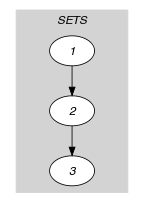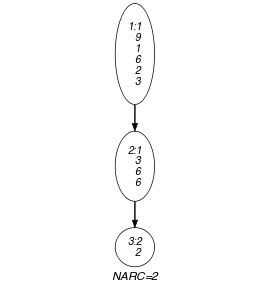5.214. k_used_by_partition
| DESCRIPTION | LINKS | GRAPH |
- Origin
- Constraint
- Types
- Arguments
- Restrictions
- Purpose
Given sets of domain variables, the constraint forces a constraint between each pair of consecutive sets.
- Example
-
The constraint holds since:
The first collection of variables is assigned 3 values in , 0 value in and 2 values in , while the second collection of variables is assigned no more values in the previous three sets of values.
The second collection of variables is assigned 2 values in , 0 value in and 2 values in , while the third collection of variables is assigned no more values in the previous three sets of values.
- Typical
- Symmetries
Items of are permutable.
Items of are permutable.
Items of are permutable.
Items of are permutable.
An occurrence of a value of can be replaced by any other value that also belongs to the same partition of .
- Arg. properties
Contractible wrt. .
- See also
common keyword: (system of constraints).
- Keywords
characteristic of a constraint: partition, sort based reformulation.
- Arc input(s)
- Arc generator
-
- Arc arity
- Arc constraint(s)
- Graph property(ies)
-
- Graph model
Parts (A) and (B) of Figure 5.214.1 respectively show the initial and final graph associated with the Example slot. To each vertex corresponds a collection of variables, while to each arc corresponds a constraint.
Figure 5.214.1. Initial and final graph of the constraint


(a) (b)